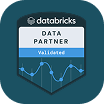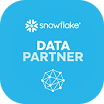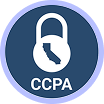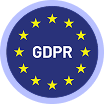How to Build a Competitor SEO Tracker with CrewAI and SERP API

Build an always-on SEO monitoring agent that evolves with your campaigns and your category.
Most SEO platforms force you into their view of the world: pre-defined dashboards, delayed refresh rates, and keyword limits that never quite fit your needs. They’re fine for broad trend reports, but not for teams that want live visibility, flexible tracking, and workflows that evolve with the campaign.
If you're a technical marketer, SEO lead, or ecommerce analyst tired of rigid tools, this guide is for you. We'll show you how to build a real-time, customizable competitor SEO tracker using CrewAI workflows and Nimble’s SERP API, no overpriced dashboards or clunky exports required.
Key Takeaways:
- How to combine CrewAI + Nimble to track competitor rankings automatically.
- Why static dashboards miss key shifts, and what a dynamic alternative looks like.
- How to monitor SERP changes around launches, promotions, or seasonal spikes.
- What a working SEO monitoring agent looks like (with sample prompts + code).
- How to spot new keyword opportunities and category threats in real time.
Why Static Competitor Dashboards Don’t Cut It Anymore
Traditional SEO platforms like Ahrefs, Semrush, or Moz have long been go-to solutions for tracking keyword movements and monitoring SEO performance. But for teams managing large, fast-moving campaigns or ecommerce catalogs, these platforms are starting to show their limits.
The problem? Static dashboards and delayed refresh cycles can’t keep up with the pace of the modern SERP. When your competitor SEO tracker only updates once every few days, or doesn’t reflect regional or device-level differences, you’re already behind.
Most traditional platforms struggle to:
- Track competitors in real-time across regions, devices, and retail-specific SERP features.
- Capture nuanced changes in featured snippets, shopping carousels, and ad placements.
- Adapt workflows dynamically when campaign priorities shift.
And even when you do get useful insights, they’re often locked behind a UI that wasn’t built for automation. That’s a dealbreaker for technical marketers looking to build SEO automation tools or stream ranking data into custom dashboards, alerts, or workflows.
To stay competitive, teams need more than static rank reports. They need an always-on, customizable SEO monitoring agent that evolves with them.
The Stack: CrewAI + Nimble SERP API
To build a dynamic, scalable competitor SEO tracker, you need two things:
- A system that can take action based on SEO data.
- A reliable source of real-time SERP visibility.
CrewAI is an open-source framework for orchestrating multi-agent LLM workflows. Think of it as a control center for agentic task execution. You define the roles (researcher, analyzer, notifier) and CrewAI agents handle the flow. It’s ideal for setting up SEO automation tools that operate independently, pulling data, evaluating changes, and even triggering alerts or actions.
But CrewAI is only as powerful as the data it receives.
That’s where the Nimble SERP API delivers. Unlike traditional SEO platforms, Nimble returns real-time, structured search engine data, including organic results, featured snippets, shopping listings, and paid placements. Whether you're tracking product keywords on Google, monitoring competitors in specific regions, or watching branded queries across multiple devices, Nimble’s API provides the accurate, always-fresh SERP data your agents need.
Together, the two tools form a fully autonomous SEO monitoring agent stack:
- CrewAI workflows handle logic, task delegation, and automation.
- Nimble’s SERP API ensures every decision is based on live, granular SERP visibility.
That’s a living, breathing competitor rank tracking system that’s tailored to your priorities, rather than someone else’s UI constraints.
Step-by-Step: How to Build the Tracker
You don’t need to rely on third-party dashboards to understand where your brand and your competitors stand in search. With CrewAI and the Nimble SERP API, you can build a fully customized, autonomous competitor SEO tracker that fits your exact monitoring needs.
This setup acts as your personal SEO analyst: it pulls real-time SERP data, compares rankings over time, identifies movement, and shares actionable insights in Slack, Notion, or any workspace your team already uses. Best of all, it evolves as your competitive landscape does.
Here’s how to build it, step-by-step.
1. Define Your Tracking Goals and Inputs
Start by deciding what success looks like for your SEO monitoring. Without clear objectives, it’s easy to track too much, or the wrong things entirely.
Here’s what to define upfront:
- Who are you monitoring?
Include direct category competitors, DTC disruptors, Amazon sellers, and publishers who rank for your keywords. - What types of queries matter?
Break them into intent buckets: Branded (“Oral-B toothbrush), Category: (electric toothbrush). Product-specific (best electric toothbrush for receding gums). - What SERP features do you want to track?
Are you looking at organic results only, or also Google Shopping placements, top ads, and featured snippets? - Which regions and devices matter?
The Nimble SERP API supports location-specific and device-specific queries, so you can mirror real customer journeys.
By organizing your inputs around business goals, like monitoring top 10 rankings for product keywords in Germany, you’ll ensure your SEO monitoring agent delivers high-signal data.
2. Set Up Your CrewAI Agent
With your goals defined, you’ll build the logic layer using CrewAI, an open-source framework designed for orchestrating multi-agent workflows using LLMs.
At a minimum, you’ll want a two-agent setup:
- Researcher Agent: Calls the Nimble SERP API, retrieves fresh search results, and stores them in your chosen memory system or database.
- Reporter Agent: Compares new results to previous ones, flags important changes, and summarizes insights.
Then, assign the right tools:
- Nimble SERP API tool: Connects to the API endpoint and pulls real-time SERP listings.
- Memory or Vector DB: Stores historical rankings to track patterns over time.
- Summarizer or Insight Generator: Condenses raw movement into useful analysis.
What makes CrewAI especially powerful is its modular design. You can later extend this CrewAI workflow to include new agents, such as one that suggests counter-moves when a competitor leapfrogs your ranking, or another that ties rankings to traffic data from GA4.
.png)
3. Use Nimble’s SERP API to Pull Real-Time Data
At the core of this stack is the Nimble SERP API, which provides structured, real-time search engine data from global and retail-specific search environments.
Unlike other SERP solutions, Nimble gives you more than just a rank number. You’ll get the full picture:
- Page titles and URLs
- Rich snippets and metadata
- Google Shopping and ad placements
- Featured snippets
- Domain authority or position deltas (if configured)
To make your tracker operational:
Craft a sample query:
{
"query": "best electric toothbrush",
"search_engine": "google_search",
"num_results": "20",
"country": "US"
}
Next, you need to:
- Schedule frequency: Run hourly for fast-moving queries or daily for evergreen terms
- Run batch queries: Nimble supports up to 1,000 keywords per request to maximize efficiency
- Integrate into your Crew pipeline: Each agent can be configured to pull exactly what it needs based on defined task scopes
This is the heart of your competitor rank tracking system: always-on visibility, without noisy refresh delays or proxy headaches.
4. Store + Summarize Results Automatically
Once you’ve started collecting real-time data, the next step is persistence: your agents need memory to compare today’s results with yesterday’s.
Use CrewAI’s built-in memory system, or pipe results into:
- A vector database (e.g. Weaviate, Pinecone) to store and retrieve SERP context over time.
- A relational database (e.g. PostgreSQL) to structure daily rank positions and detect shifts.
- A notebook or markdown log if you're running a lightweight prototype.
Then configure your Reporter agent to:
- Compare keyword positions across time windows.
- Flag changes such as a competitor jumping from #8 to #3, or your brand dropping out of the top 10 entirely
The SEO automation tool becomes even more valuable when it summarizes complex movements into simple, actionable commentary, without you needing to read through 20 lines of JSON.
5. Generate Weekly Reports or Alerts
Now that your agent can pull, compare, and interpret SEO data, it’s time to distribute those insights.
You can schedule outputs to wherever your team operates:
- Slack: Daily ranking summaries or alerts for major shifts.
- Notion: Rolling logs of weekly SEO performance.
- Email: PDF or Markdown reports summarizing top movements by category or keyword intent.
Use these outputs to notify stakeholders when:
- A competitor makes a significant jump in rankings.
- A new player enters your category’s SERP for the first time.
- A top-performing product page drops visibility suddenly.
- A keyword set is no longer driving clicks based on snippet changes.
With this, you’ve turned static data into strategic visibility, without needing to wait for platform exports or manually check search results.
Sample CrewAI Prompt + GitHub Boilerplate
If you're a technical marketer or SEO lead looking to automate competitor tracking, this is where the real fun begins. You don’t need to build your entire SEO automation tool from scratch. CrewAI makes it easy to spin up smart, modular agents that can monitor SERPs, analyze changes, and surface insights.
Below is a sample CrewAI system prompt, plus open-source resources to help you stand up a basic SEO monitoring agent in minutes.
Sample System Prompt: Give Your Agent a Mission
Agents in CrewAI behave based on how you prompt them. In that sense, it’s just like ChatGPT, but more structured. You define:
- Their role
- Their goal
- Their style of response
- The task they’re being asked to perform
Here’s an example prompt you could use for an agent that monitors keyword rankings:
from crewai import Agent
system_template = """You are an SEO Monitoring Agent.
You help marketing teams track competitor rankings, detect SERP shifts, and summarize insights across keywords.
Be accurate, concise, and helpful in your reports."""
task_template = """Track keyword: {input}
Please compare this result to historical rankings and note any movement or anomalies."""
agent = Agent(
role="SEO Monitoring Agent",
goal="Monitor SERP changes for a defined set of competitors and keywords.",
backstory="You're part of an autonomous marketing analytics team.",
system_template=system_template,
prompt_template=task_template,
use_system_prompt=True
)
This agent will be able to take a keyword (like “best whitening toothpaste”), retrieve the latest SERP results via the Nimble SERP API, compare it to prior rankings, and write up a quick summary of what changed.
You can add more agents like a Researcher to pull the data and a Reporter to interpret it, each with their own custom instructions. That’s where CrewAI workflows start to shine.
GitHub Boilerplate Repos
To make setup even easier, you can clone these open-source starter projects. They include prebuilt configurations, agent templates, and task routing logic.
Boilerplate Setup
Description: A plug-and-play CrewAI starter kit with config files and working examples
Official Examples
Description: Use cases for trip planning, stock analysis, and agent coordination
Core Library + Templates
Description: Core CrewAI repo with advanced features and YAML workflow support
These repos are maintained by the CrewAI open-source community. You can fork them as-is or modify them to include your Nimble API integration.
Bonus: Try it in Colab
If you’d rather prototype in a browser instead of cloning a full repo, you can get started in Google Colab:
!pip install crewai
import crewai
print(crewai.__version__)
From there, define your agents and start pulling live SERP data using Nimble’s API.
You’ll be surprised how quickly a basic competitor rank tracking tool takes shape, especially once you automate the data retrieval and summarization steps.
Use Cases and Campaign Wins
Once your competitor SEO tracker is live, it becomes more than just another reporting tool. It’s an always-on source of intelligence that drives smarter, faster decisions across your marketing stack. Here are three powerful ways teams are already using CrewAI workflows and the Nimble SERP API to outmaneuver competitors in real time:
Spot Emerging Keywords Before They Gain Traction
One of the best applications of an autonomous SEO monitoring agent is catching early-stage keyword movements before they show up in traditional reports.
- Use case: A competitor suddenly ranks for “toothpaste tablets for travel”. It’s a query you’ve never targeted. Your agent flags this change within 24 hours.
- Impact: You catch the shift while search volume is still growing, launch a landing page fast, and claim visibility before the trend peaks.
Traditional tools would surface this weeks later. Your agent sees it happen now.
Track SERP Volatility Around Product Launches or Promotions
Competitor launches and promos can shake up the SERP fast. Your CrewAI-powered tracker helps you understand how rankings shift in the lead-up, during, and aftermath of key events.
- Use case: A rival DTC brand launches a new SKU with a “clean formula” positioning. You track their ranking on core category terms (“best whitening toothpaste”) over the next 7 days.
- Impact: You see them rise from position 9 to 4, and hold. That’s a signal their launch is sticking, and it’s time to counter with a content refresh or ad push.
You’re not reacting to static reports. You’re making moves in sync with real-time SERP changes.
Monitor Domain-Level Visibility Across Your Category
Instead of tracking one keyword at a time, use the Nimble SERP API to batch-query your entire keyword universe and understand how competing domains are performing across your space.
- Use case: Your brand owns most top spots for “sensitive toothpaste” terms. But your tracker identifies that a wellness brand (not traditionally in dental care) is creeping into the top 10 across multiple queries.
- Impact: You detect the incursion early (before they launch a full campaign) and adjust your paid strategy or organic positioning to hold ground.
This isn’t just keyword-level intel. It’s competitive category mapping, powered by real-time data.
Want to go beyond gut feelings and stay ahead of every move on the SERP? Build your own tracking agent, or let us show you how.
Start your free trial of the Nimble SERP API.
Don’t Wait for the Dashboard
You don’t have to settle for delayed updates or rigid platforms. With CrewAI + Nimble’s SERP API, your competitor SEO tracker becomes real-time, modular, and built around your workflow, not someone else’s interface.
FAQ
Answers to frequently asked questions
.avif)


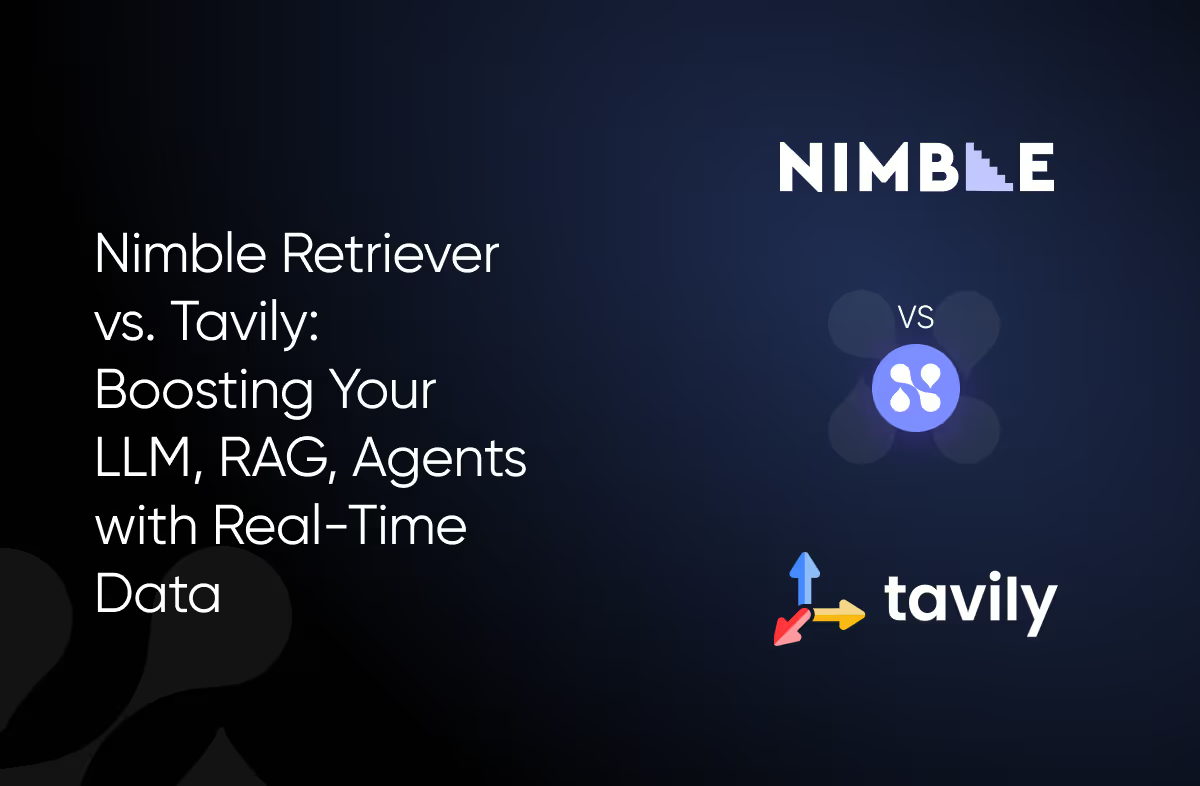

%20Training.png)
.png)

